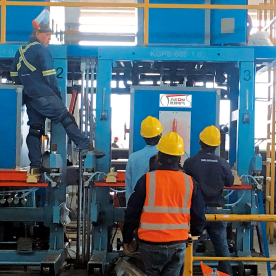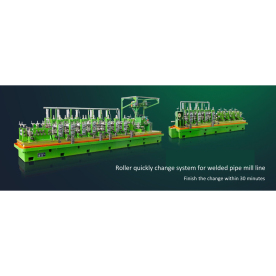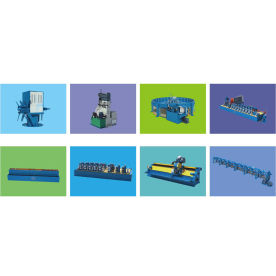[Energy-saving induction heating equipment]Revolutionizing Manufacturing: The Role of Energy-Saving Induction Heating Equipment in Enhancing Efficiency and Reducing Costs
News 2025-1-4
In today’s fast-paced industrial landscape, manufacturers are constantly seeking more efficient, cost-effective methods to optimize their production processes. Among the numerous technological advancements at their disposal, energy-saving induction heating equipment has emerged as a game-changer. This high-tech solution not only enhances productivity but also significantly reduces energy consumption and operational costs. In this article, we will explore the mechanics of induction heating, its benefits, and how it stands as a pivotal element in modern manufacturing.
Induction heating is a process that utilizes electromagnetic induction to heat electrically conductive materials. Unlike traditional heating methods, which rely on direct flame or thermal conduction, induction heating generates heat directly within the material being heated. This is achieved by passing an alternating current through a coil, creating an oscillating magnetic field. When a conductive material is placed within this magnetic field, electrical currents, known as eddy currents, are induced in the material, leading to rapid heating.
One of the most compelling reasons manufacturers have begun to adopt energy-saving induction heating equipment is its high efficiency. Conventional heating methods can often result in significant energy wasted in the form of heat lost through the surrounding environment. In contrast, induction heating achieves efficiencies as high as 90% or more. This higher efficiency translates into lower energy costs and a reduced carbon footprint, aligning well with modern sustainability goals.
Moreover, induction heating equipment boasts an impressive speed advantage. Processes that may take several minutes or hours with traditional heating methods can often be completed in mere seconds with induction heating. For example, in metalworking, tasks like hardening, annealing, or brazing can be accomplished much quicker, thereby greatly improving production throughput. This rapid heating capability allows factories to adapt to changing demand swiftly, maintaining their competitive edge in the market.
Beyond speed and efficiency, energy-saving induction heating equipment also offers enhanced precision in temperature control. The ability to heat specific areas of a workpiece without affecting the entire item is crucial in various applications. This targeted heating reduces the risk of thermal stress and warping, which can compromise the quality of the finished product. Industries such as automotive, aerospace, and electronics, where precision is paramount, often rely on induction heating for these very reasons.
The automation potential of induction heating systems further boosts their appeal. Many modern induction heating units can be fully integrated into automated production lines, allowing for real-time monitoring and adjustments. This not only streamlines the workflow but also significantly minimizes the chances of human error. As Industry 4.0 principles continue to take hold, the integration of induction heating with smart sensors and data analytics will lead to even more efficient manufacturing processes.

Revolutionizing Manufacturing: The Role of Energy-Saving Induction Heating Equipment in Enhancing Efficiency and Reducing Costs

Revolutionizing Manufacturing: The Role of Energy-Saving Induction Heating Equipment in Enhancing Efficiency and Reducing Costs

